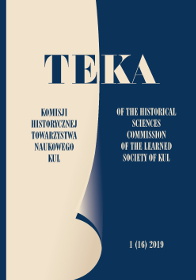Zbrodnie hitlerowskie na Pomorzu Gdańskim w latach 1939-1940. Piaśnica: geneza, uwarunkowania, zbrodnia i pamięć
The Nazi-German crimes in Pomerania-Gdańsk in the years 1939-1940. Piaśnica. Genesis – conditions – course and memory
Author(s): Dariusz OstapowiczSubject(s): History, Recent History (1900 till today), WW II and following years (1940 - 1949)
Published by: Towarzystwo Naukowe Katolickiego Uniwersytetu Lubelskiego Jana Pawła II
Keywords: Piaśnica; Selbstschutz; SS-Wachsturmbann “Eimann”; exterminations
Summary/Abstract: The crime of the German-Nazi invader carried out in Piaśnica was the largest in northern Poland and the occupied country from autumn 1939 to spring 1940. About 12,000 people from the Polish political elite and intellectuals, especially from representatives of clergy of the Roman Catholic Church were killed, among patients in psychiatric hospitals. Genesis of his crime is a German revanchism against the Versailles dictat, postulates of Lebensraum (germ. ‘living space’), germanization and the criminal ideology of Nazism. The squad Selbstschutz (paramilitary units the German minority in Poland) and SS – operational group Wachsturmbann “Eimann” and Einsatzkommando 16 are responsible for this genocide and ethnic cleansing planned before the war, including deportation of Poles to General Government and KL Stutthof. In a difficult situation, the regional Kashubians (Pomerania ethnic minority), have to choose between adaptation and extermination. Piaśnica for the German-Nazis was to serve as a model for further crimes, for example in the Szpęgawsk. Nowadays on the initiative of Piaśnica Family Association the Piaśnica forest is a place of national remembrance with the sanctuary of the Blessed Virgin Mary.
Journal: Teka Komisji Historycznej Towarzystwa Naukowego KUL
- Issue Year: 16/2019
- Issue No: 1
- Page Range: 57-69
- Page Count: 13
- Language: Polish

